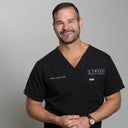Thank you for your question regarding whether driving after a lower body lift can widen scars. In the early stages of recovery, activities that involve stretching or placing tension on your incision sites, such as getting in and out of a car, could potentially impact your healing process. Scar widening can happen if too much tension is placed on the healing tissue, especially during the first 6–8 weeks after surgery. However, with proper care and precautions, driving or getting into a car is unlikely to cause significant issues with your scars.


